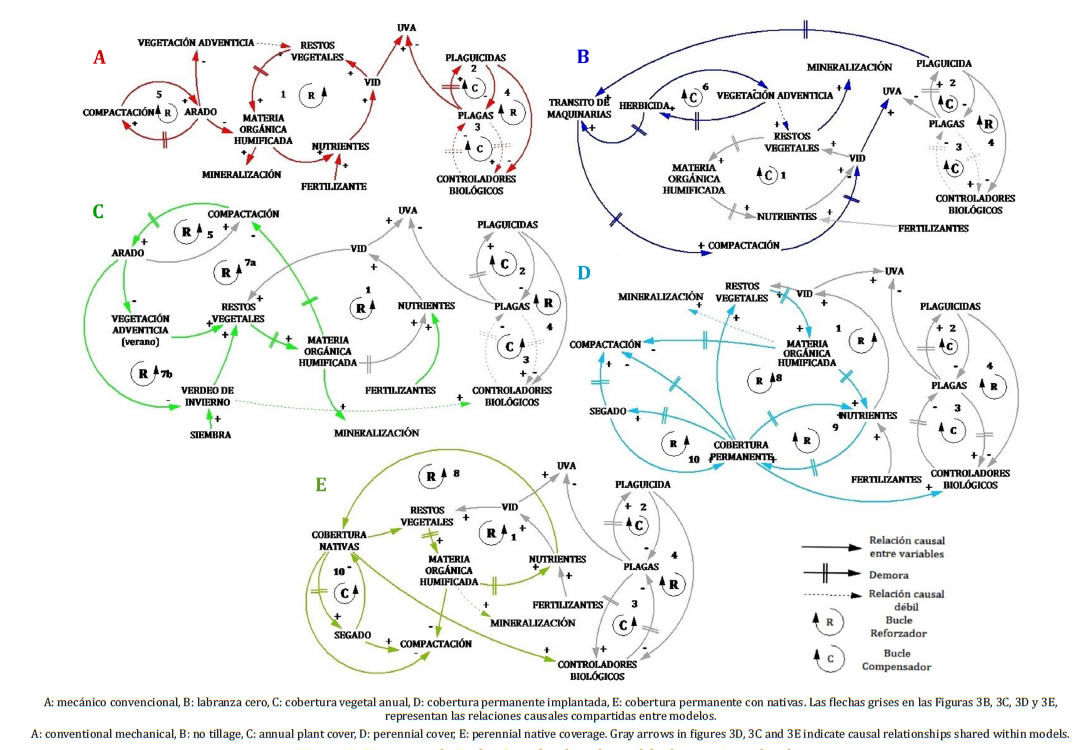Inter-row management models in vineyards: perceptions about their value as ecosystem service providers
Keywords:
Biodiversity, Environmental benefits, Soil management, Vegetation cover, Native plantsAbstract
Currently, in the main wine region of Argentina there are several management techniques of the vineyard, which impact on biodiversity and the supply of ecosystem goods and services. We wanted to investigate the perception degree that technicians and local grapevine growers have on the effects of inter-row management practices on the provision of ecosystem services, as well as their associated costs. Through interviews, we asked about the degree of contribution that the five inter-row management techniques identified over the main vine productive areas of Mendoza, have on 33 environmental, cultural and productive key variables. The perception values obtained were contrasted with current scientific knowledge to identify the degree of adequacy between them. Finally, by means of data triangulation, causal loop diagrams were constructed in order to explain the operation of the models from a complex system dynamics approach. Results show that local growers and technicians perceive greater environmental benefits in those managements with vegetation cover, particularly the permanent ones and those incorporating native species, in coincidence with the scientific evidence. Likewise, the causal loop diagrams show a greater complexity of relationships in these management techniques that could evidence a greater resilience of the agroecosystems and better possibilities of conserving the native biodiversity and its ecosystem services.

Published
Issue
Section
License
Aquellos autores/as que tengan publicaciones con esta revista, aceptan las Políticas Editoriales.


